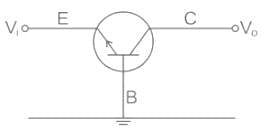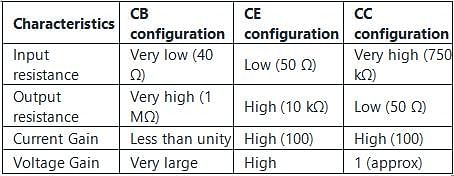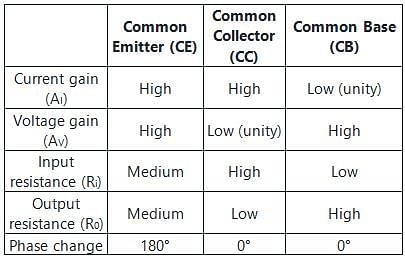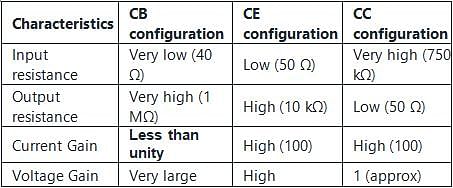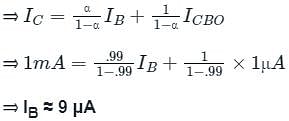Test: Common Base Configuration - Electronics and Communication Engineering (ECE) MCQ
10 Questions MCQ Test Electronic Devices - Test: Common Base Configuration
In a Common Base Configuration, BJT has _______ input impedance and ________output impedance.
Which of the following statement/s is /are correct regarding the CB Configuration amplifier?
A). Current gain of an ideal Common base amplifier is unity.
B). Voltage gain is unity.
C). The Phase between input and output is 180º.
A). Current gain of an ideal Common base amplifier is unity.
B). Voltage gain is unity.
C). The Phase between input and output is 180º.
| 1 Crore+ students have signed up on EduRev. Have you? Download the App |
For a BJT with common base connection, the emitter current is 1 mA. If the emitter circuit is open, the collector current is 50 µA. Find the total collector current, if α = 0.92.
Which of the following quantities is boosted by this circuit when a BJT is connected in a circuit in common base configuration?
For a transistor connected in common base connection, collector current is 0.95 mA and base current is 0.05 mA. Find the value of α :
The current gain value of common base configuration is _______.
In a common base cenfiguration, the alpha of the transistor is 0.99, its collector current is 1 mA and the collector to base current with emitter open is 1 μA. The value of base current is
In CB configuration of transistor, the output impedance is:
In common base configuration, the current amplification factor is:
In a common base transistor configuration, if IB = 0.25 mA and IE = 1.4 mA, then IC is:
|
21 docs|29 tests
|
|
21 docs|29 tests
|


